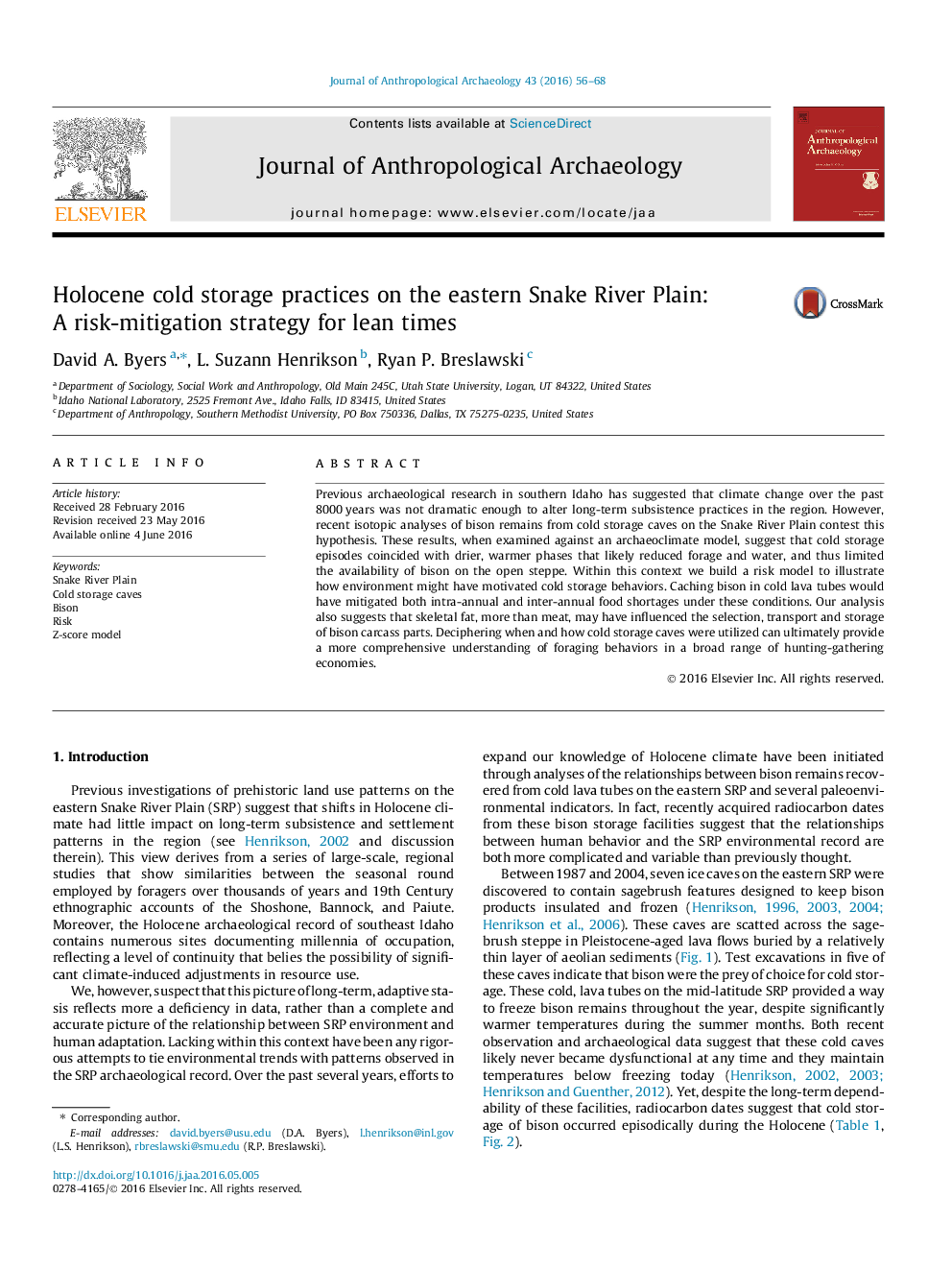| کد مقاله | کد نشریه | سال انتشار | مقاله انگلیسی | نسخه تمام متن |
|---|---|---|---|---|
| 1034848 | 1483847 | 2016 | 13 صفحه PDF | دانلود رایگان |
• Storage serves as a risk management strategy used by Snake River Plain foragers.
• Environmental variability conditions bison storage in Snake River Plain ice caves.
• Snake River Plain foragers emphasized storage during warmer and dryer times.
Previous archaeological research in southern Idaho has suggested that climate change over the past 8000 years was not dramatic enough to alter long-term subsistence practices in the region. However, recent isotopic analyses of bison remains from cold storage caves on the Snake River Plain contest this hypothesis. These results, when examined against an archaeoclimate model, suggest that cold storage episodes coincided with drier, warmer phases that likely reduced forage and water, and thus limited the availability of bison on the open steppe. Within this context we build a risk model to illustrate how environment might have motivated cold storage behaviors. Caching bison in cold lava tubes would have mitigated both intra-annual and inter-annual food shortages under these conditions. Our analysis also suggests that skeletal fat, more than meat, may have influenced the selection, transport and storage of bison carcass parts. Deciphering when and how cold storage caves were utilized can ultimately provide a more comprehensive understanding of foraging behaviors in a broad range of hunting-gathering economies.
Journal: Journal of Anthropological Archaeology - Volume 43, September 2016, Pages 56–68
